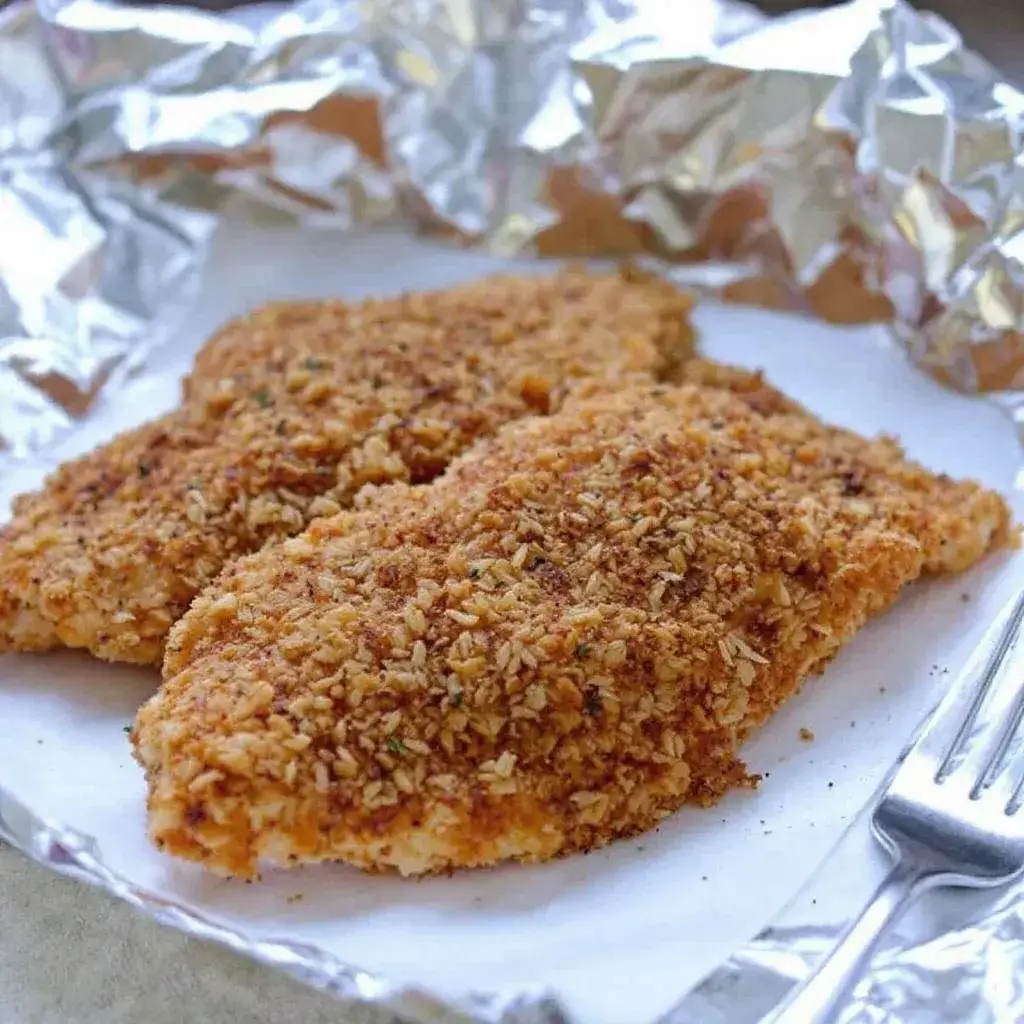Here’s a delectable Cajun Catfish recipe that packs a flavorful punch and is sure to be a crowd-pleaser. This dish combines the distinct spiciness of Cajun seasoning with the mild flavor of catfish, making it perfect for family dinners or casual gatherings. The crispy coating, combined with the tender, flaky fish, creates a satisfying meal that’s as delicious as it is easy to prepare. Let’s dive into the details!
Cajun Catfish Recipe
Ingredients
To get started, gather the following ingredients:
- 4 catfish fillets (about four oz. each)
- 1 oz. wheat flakes cereal (ground to create a crunchy coating)
- 1 tablespoon paprika (for color and a mild kick)
- 1/4 teaspoon salt (to enhance all the flavors)
- 1/4 teaspoon onion powder (for a touch of sweetness)
- 1/4 teaspoon garlic powder (to introduce a savory element)
- 1/2 teaspoon cayenne pepper (for a spicy kick)
- 1/2 teaspoon black pepper (for depth)
- 1/2 teaspoon white pepper (to enhance the heat)
- 1/2 teaspoon thyme (for an earthy note)
- 1 tablespoon oil (for frying)
Instructions
Prepare the Fish
Begin by washing your catfish fillets under cold water to remove any excess slime. Once they are clean, pat them dry with paper towels. This step is crucial because eliminating moisture from the fish helps the coating adhere better and ensures a crispy texture when fried.
Mix the Coating
In a medium-sized bowl, combine the ground wheat flakes with all the seasonings: paprika, salt, onion powder, garlic powder, cayenne pepper, black pepper, white pepper, and thyme. Mixing these spices well will create a flavorful coating that enhances the catfish. The paprika gives the coating a beautiful color, while the combination of cayenne pepper and black pepper provides a delightful heat.
Once mixed, pour the seasoning mixture onto a piece of foil or wax paper to create a flat surface for coating the fillets.
Coat the Fillets
Gently dip each catfish fillet into the seasoning mixture. Please make sure you coat both sides thoroughly, pressing lightly to make sure the seasoning adheres well to the fish. The goal is to have a generous layer of the spicy coating on each fillet, resulting in a crispy outer layer once cooked.
Heat the Oil
In a heavy cast-iron frying pan, heat the oil over medium heat. A cast-iron skillet is ideal for frying because it retains heat well and provides an even cooking surface, resulting in perfectly golden, crispy catfish. To test if the oil is hot enough, drop a small piece of the coating mixture into the pan; if it sizzles, you’re ready to go!
Fry the Fillets
Carefully place the coated catfish fillets into the hot oil. Fry them for about 2 minutes on each side, or until they are golden brown and cooked through. Avoid overcrowding the pan, as this can lower the oil’s temperature and result in soggy fish. If necessary, fry the fillets in batches for the best results. As the fillets cook, your kitchen will fill with the enticing aroma of spices and fried fish.
Drain Excess Oil
Once cooked, use tongs to carefully transfer the fillets to a plate lined with paper towels. This will help absorb any excess oil and keep your catfish crispy. You can cover the fried catfish with another paper towel and gently pat to remove any remaining grease.
Serve
Your Cajun catfish is now ready to serve! Enjoy these flavorful bites hot, accompanied by your favorite sides. A classic Southern pairing would be coleslaw and cornbread, but feel free to get creative with sides like grilled vegetables or a fresh garden salad. The crispy, seasoned exterior and flaky fish will have everyone coming back for seconds.
This Cajun Catfish recipe is perfect for any occasion, whether it’s a family dinner, a casual get-together, or even a festive celebration. With its combination of spices and textures, it’s destined to be a hit on your dining table! Enjoy your culinary adventure!
Disclaimer:
This recipe is intended for informational purposes only. Please check for any allergies or dietary restrictions before preparing the dish. The creator of this recipe is not responsible for any adverse reactions or consequences resulting from its use. Always exercise caution when handling kitchen tools and ingredients. Enjoy cooking!

